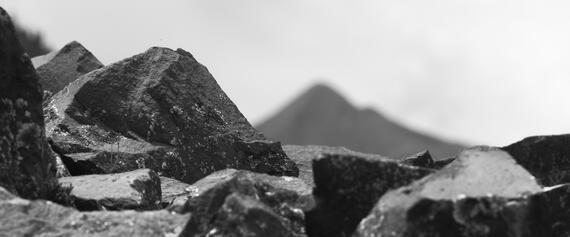Jero Gonzáles: Photographer and Preservationist

In 2009, photographer Jeronimo (Jero) Gonzáles participated in a training program for young adults in the Andahuaylillas region of Peru. The program, which WMF helped organize, was designed to involve local youth in heritage preservation and centered on skills building and training in subjects like documentation and interpretation.
After completing the program, Gonzáles and other participants formed Grupo Patrimonio Qoriorqo, a non-profit organization dedicated to preserving Rumiqolqa, an ancient archaeological site included on the 2016 Watch. WMF Peru’s Renata Tavara sat down with Jero for a Q&A session in August 2016. Questions and answers have been translated to English.
On his early involvement at the Andahuaylillas youth training program
When I joined the training program in 2009, I was studying and working on computer science, and in parallel I was also part of a folklore dance group. It was through this dance group that I first had the opportunity to research and better understand the different cultural traditions of our town. Thanks to folklore music and dance, I was able to find myself, and to recognize myself as part of the place where I lived. From then on, my interest in both tangible and intangible cultural heritage increased. In 2009, some friends invited me to participate in the project that WMF was developing with young people in Andahuaylillas, and that’s how I became involved.
On Grupo Patrimonio Qoriorqo
Most of the members of Grupo Patrimonio are young people. At the time of the group’s creation, we were students in undergraduate and graduate programs. Along with our interest in developing our professional careers, we all shared an interest in safeguarding cultural heritage.
The main goal of the group is to involve the community in the preservation and protection of their own heritage. It is not an easy task. We are developing strategies for community engagement, while also trying to create opportunities for discussion of culture and other important issues. Currently, we are working on the development of Qorioqo Cultural Center (Centro Cultural Qoriorqo), a space for exchange, education, and the promotion of various cultural traditions of both our own town and neighboring places.
On heritage preservation
Cultural heritage preservation is important because having a legacy of knowledge and cultural traditions makes us proud and more knowledgeable. This, and especially the respect for cultural heritage, makes our understanding of the world much more uplifting.
On photography
Photography has been the best means for me to get to know the beautiful places and people in our towns.
I've had a lot of wonderful shoots. The most interesting was Luz en la cantera in Rumiqolca (Andahuaylillas). The site pays tribute to one of the most important sacred spaces of the Inca Empire, where the materia prima (stone) for the construction of the Temple of the Sun was quarried. This series of images gives the viewer a privileged experience of the shapes and shades of the place, as in a superior gesture of the sun.
Without a doubt, the most challenging shoots are my projects related to local festivals, especially because it is difficult to communicate through photography the combination of experiences that occur simultaneously in most of the rites and celebrations that take place in the districts of the Quispicanchi province (in Cusco).
On his favorite heritage sites
My favorite heritage site in Peru is the Church of Marcapata (Cusco). It is a place where the human, the natural, and the divine connect, especially during the festival of Wasichakuy, or the rethatching of the roof, which takes place every four years.
I've been asked about which sites I would like to shoot. This is a tough question! There are many places in Peru and all over the world that I would like to photograph. The first one that comes to mind is Yosemite National Park in the United States. I would love to see, in person, the majesty of its mountains, trees, rivers, and vegetation.
Black and white photo: Rumi Rumi, Jero Gonzáles, 2016.
